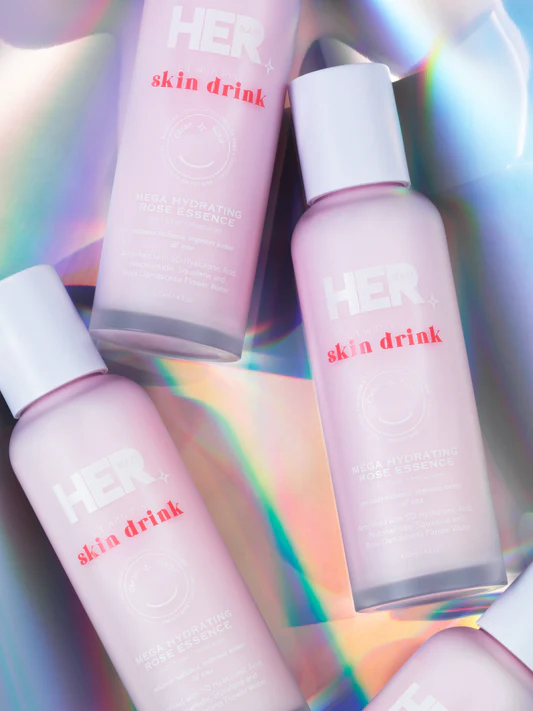When traditional skincare routines fail to address persistent skin concerns, it’s time to look deeper into the science of chemical exfoliation. Unlike physical scrubs that can damage the skin barrier, chemical exfoliants work at the molecular level to transform skin texture, clarity, and overall health.
Understanding Your Skin’s Natural Process
Your skin naturally sheds dead cells every 28-30 days through a process called desquamation. However, various factors can disrupt this cycle, leading to conditions like keratosis pilaris (KP), acne, hyperpigmentation, and premature aging. When dead skin cells accumulate, they create rough texture, clogged pores, and an overall dull appearance.
Chemical exfoliation accelerates this natural process by breaking down the bonds between dead skin cells, revealing the healthier skin underneath. This approach is particularly effective for addressing stubborn conditions that don’t respond to conventional treatments. For instance, a well-formulated KP exfoliating lotion can transform rough, bumpy skin by targeting the specific keratin buildup that characterizes keratosis pilaris.
The Two Powerhouse Categories: AHAs and BHAs
Alpha Hydroxy Acids (AHAs): The Surface Transformers
Glycolic Acid stands out as the gold standard among AHAs due to its small molecular size, allowing it to penetrate deeply into the skin. At concentrations between 10-15%, glycolic acid effectively:
- Dissolves the intercellular cement holding dead skin cells together
- Stimulates collagen production for anti-aging benefits
- Improves skin texture and reduces fine lines
- Enhances product absorption for subsequent skincare steps
Lactic Acid offers a gentler alternative while still providing significant exfoliation benefits. It’s particularly suitable for sensitive skin types and offers additional hydrating properties.
Beta Hydroxy Acids (BHAs): The Deep Cleaners
Salicylic Acid is oil-soluble, making it uniquely capable of penetrating into pores to dissolve sebum and cellular debris. At 2% concentration, it effectively:
- Unclogs pores from within
- Reduces inflammation associated with acne
- Helps normalize oil production
- Provides antibacterial benefits
Tackling Keratosis Pilaris: A Scientific Approach
Keratosis pilaris affects up to 40% of adults and is characterized by rough, bumpy skin caused by keratin buildup around hair follicles. Traditional moisturizers often fail because they don’t address the root cause: excessive keratinization.
The most effective treatment approach combines:
Glycolic Acid (10-15%) to dissolve the keratin plugs and smooth skin texture Salicylic Acid (2%) to penetrate into follicles and prevent future buildup pH optimization between 3.5-4.0 for maximum efficacy without irritation
This combination approach has shown remarkable results in clinical studies, with many patients seeing significant improvement within 4-6 weeks of consistent use.
The Critical Role of pH in Skincare Efficacy
One of the most overlooked aspects of skincare is pH balance. Many products fail to deliver results because their pH levels don’t support active ingredient efficacy. Here’s why pH matters:
- Glycolic acid requires a pH of 3.5-4.0 to remain in its active, unbound form
- Salicylic acid is most effective at pH 3.0-4.0
- Skin barrier function is optimized when products maintain compatibility with skin’s natural pH of 4.5-5.5
Products formulated without proper pH consideration may contain active ingredients that remain largely inactive, explaining why some treatments fail to deliver expected results.
Building an Effective Chemical Exfoliation Routine
Step 1: Start Gradually
Begin with lower concentrations 2-3 times per week, gradually increasing frequency as your skin builds tolerance. This approach minimizes irritation while allowing your skin to adapt.
Step 2: Focus on Formulation Quality
Look for products that prioritize:
- Clean ingredient lists without unnecessary fillers
- Proper pH levels for active ingredient efficacy
- Stability testing to ensure consistent potency
- Clinical backing rather than marketing claims
Step 3: Combine with Supportive Ingredients
Effective chemical exfoliation works best when combined with:
- Ceramides to support barrier repair
- Niacinamide to reduce inflammation
- Hyaluronic acid for hydration
- Broad-spectrum SPF for protection
Common Mistakes That Limit Results
Over-exfoliation is perhaps the biggest mistake people make. Signs include persistent redness, increased sensitivity, and paradoxically worsening skin texture. The goal is consistent, gentle exfoliation rather than aggressive treatment.
Ignoring ingredient interactions can also limit results. For example, using vitamin C and glycolic acid simultaneously can cause irritation and reduce efficacy of both ingredients.
Inconsistent use prevents skin from reaching its full transformation potential. Chemical exfoliation requires patience and consistency to see meaningful results.
The Future of Skincare: Science-Driven Solutions
The skincare industry is evolving toward evidence-based formulations that prioritize efficacy over marketing appeal. This shift focuses on:
- Ingredient transparency with clear explanations of each component’s purpose
- Clinical validation of product claims
- Sustainable practices without compromising effectiveness
- Personalized approaches based on individual skin needs
Conclusion: Embracing Scientific Skincare
Chemical exfoliation represents a paradigm shift from surface-level treatments to addressing skin concerns at their source. By understanding the science behind these powerful ingredients and choosing products formulated with proper pH and clean ingredients, you can achieve transformative results even with the most stubborn skin conditions.
The key lies in moving beyond products that promise quick fixes and instead embracing scientifically-formulated solutions that work with your skin’s natural processes. Whether dealing with keratosis pilaris, acne, or signs of aging, the right chemical exfoliation approach can unlock your skin’s potential for lasting transformation.
Remember, skincare is a journey that requires patience, consistency, and the right scientific foundation. When you choose products based on proven efficacy rather than marketing claims, you’re investing in long-term skin health and confidence.
